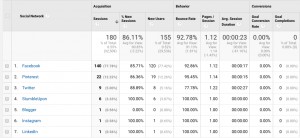With the widespread growth of eCommerce in the B2B sphere, it’s now more necessary than ever for wholesalers to have an effective online presence. There are tremendous opportunities that a wholesaler website offers, including increasing sales and improving the efficiency of the buying process.
Particularly in the context of B2B eCommerce, a well-designed and functioning wholesaler website can act as a catalyst for the improvement of processes across your entire enterprise. Customers now expect to be able to fulfill an array of needs, from customer service requests to making snap orders on the shop floor, through a digital platform.
In this post, we’re going to look at five key ways that you can improve the quality of your own wholesaler website.
5 Tips for Building an Effective Wholesaler Website
1. eCommerce Is Key
The main purpose of building a wholesale website is to provide some kind of eCommerce platform through which your customers can make purchases. The growth of B2B eCommerce has been guided by the existing expectations from buyers’ experiences with B2C platforms. In this vein, it’s important that you offer the functionalities that characterize B2C platforms, including information-rich product listings, automated buying processes, and up-to-date inventory data.
You should also consider the specific needs of B2B buyers when designing your eCommerce platform. Corporate customers are increasingly taking advantage of features like order histories and subscriptions with a view to streamlining the ordering process. Offering these functionalities can result in higher levels of sales and customer engagement over the long term.
2. Take Advantage of Online Marketing Opportunities
The online space offers a host of new marketing opportunities that wholesale suppliers can take advantage of. The simple presence of an online portal means that you can communicate quickly and directly with your whole customer base.
Offers and promotions, for example, can be promoted inexpensively through your website, while information about new products can easily be modified and updated. Any promotional initiatives can also be tested rigorously by making use of analytics tools.
Your wholesaler website can be used in tandem with any digital marketing efforts by acting as a landing page for potential customers. Social media and search engine advertising, for instance, requires an optimized and conversion-ready website.
3. Publish Buyer-Relevant Updates
Alongside acting as the portal through which buyers will access your eCommerce store, your website can also work as a source of information about your company and your products. A regularly-updated blog, for example, can help establish long-term trust and authority with your customers.
There should be a dedicated area on your site for publishing content that is relevant to your company and, if appropriate, the broader industry. On a basic level, “FAQ” and “About Us” pages will provide essential information on your company. But in order to develop a relationship with your clients in which you are perceived as an authority in your industry, it’s also necessary to consistently publish new content with a broader scope. Blog posts, webinars, and videos are all methods of regularly keeping your customers updated and engaged.
4. Be Mobile-Ready
Mobile eCommerce is expected to be worth around $ 700 billion by 2017. With this figure in mind, wholesalers should make sure that mobile readiness is a major priority for their eCommerce strategy. . More buyers are using tablets and smartphones to make purchases, and the use of mobile devices opens up a host of buying opportunities that were previously inaccessible to suppliers.
Many customers also use their smartphones to consume content online. If you’re regularly publishing content, whether in the form of blog posts, videos, or webinars, make sure that they’re accessible through a mobile device.
5. Incorporate Analytics
Your long-term ability to develop and improve your eCommerce website is dependent on setting up a robust analytics framework. Tracking key metrics, whether ROI, customer engagement, or the number of visitors to your site, will enable you to monitor the success of any changes that are made to your online portal, while also pinpointing areas that are performing poorly. For these reasons, it’s important that you devote time to analytics from the get-go.
It’s also key to take an enterprise-wide approach to data analytics. The insights that can be gleaned from data about the behavior of your customers are usually applicable to various departments, so fostering cross-departmental communication in analytics can have wide-ranging benefits.
What are your thoughts about developing and optimizing a wholesaler website? Leave a comment below.
Business & Finance Articles on Business 2 Community(44)





